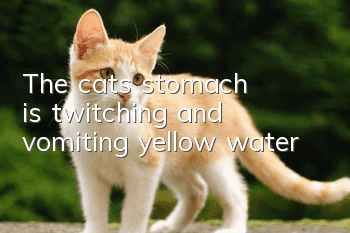How to prevent and treat alopecia areata in Somali cats?

How to prevent and treat Trichoderma alopecia in Somali cats? Among various animals, it is more common in cattle and horses, and less common in cats. If a cat is infected with this disease, how should it be treated?
1. Occurrence and spread
There are two types of pathogens of Trichophyton alopecia: Trichophyton and Blastocystis. Trichophyton alopecia in cats is mostly caused by Blastocystis genus. This kind of small Bacillus spores is found on the surface of the skin, in the hard skin and scales, in the hair follicles, around the hair roots or on the hair body, forming a large number of spores. When the sick cat scratches or rubs it on various objects, or with other When cats lick each other, they can spread the infection, causing the disease to spread. Because the spores are highly resistant to heat and disinfectant solutions and are difficult to kill, once the disease occurs, it is difficult to completely treat it.
2. Diagnosis
The most common areas of cat alopecia are on the face, trunk, tail and limbs. Round tinea spots appear, covered with gray scales, and the hair in the tinea spots is broken or fallen off. The sick cat has severe itching and often rubs it on various objects. The course of the disease is long, and bald spots form after the scales fall off. For atypical cases, it is difficult to diagnose based on clinical symptoms. At this time, the disease, such as skin flakes at the junction of disease and health, broken hair roots, etc., should be properly treated with 10% sodium hydroxide solution, and then microscopic examination should be carried out. The diagnosis can be confirmed by seeing small buds holding seedlings at the roots of the transparent hairs.
3. Prevention and Control Measures
The key to preventing this disease is to keep the cat's skin clean and hygienic, bathe and comb the cat frequently. In addition, contact between healthy cats and sick cats should be prevented. To treat sick cats, you should first cut off the coat of the affected area and its surroundings, soak and wash the affected area with hot soapy water to soften the hard skin. Then wash the scalp with warm 3-5% Clialin solution to remove the softened blemishes. After the affected area is treated, apply 10% iodine anhydride or 10% salicylic acid alcohol or salicylic acid ointment locally, initially every day. Once, then every 1-2 days until recovery. Griseofulvin can effectively inhibit epidermophyton such as Bacillus parvum. It is mainly taken orally and should be taken continuously until the diseased tissue is completely replaced by healthy tissue. The dosage is 20-25 mg per kilogram of body weight. The griseofulvin currently produced in my country is particulate type. If non-particulate type is used, the dose should be increased. During the period of medication, feeding and management must be strengthened and sanitary conditions must be improved. 3-5% clotrimide ointment, applied locally, has a good effect on cat alopecia and tinea.
- Symptoms of tetanus infection in cats
- Comparison before and after Ragdoll cat’s hair explodes
- When your cat doesn’t want to use the litter box, you should pay attention to these issues!
- What’s the best way to raise an immature cat?
- How to make cats like the cat climbing frame?
- What is the easiest way to get rid of fleas on cats?
- Early symptoms of cardiac hypertrophy in cats
- What are the most dangerous days for cat plague?
- What genetic diseases do Ragdoll cats have? Common hereditary diseases in cats!
- How many teeth does a cat have?



